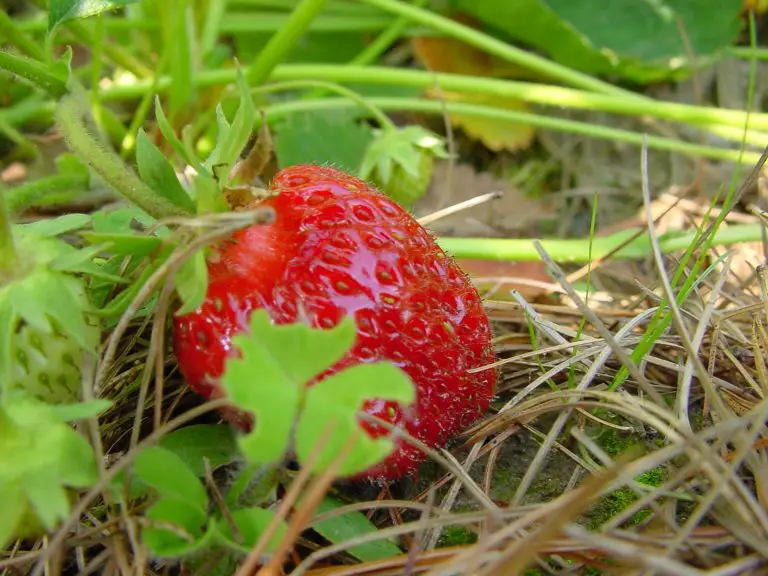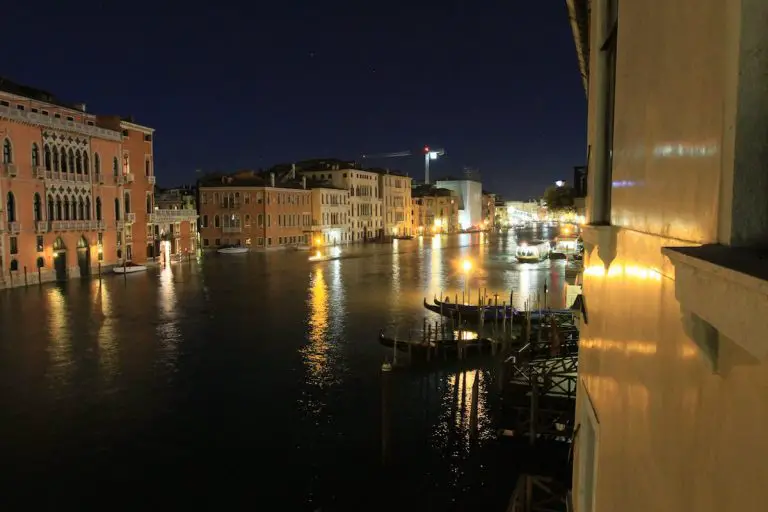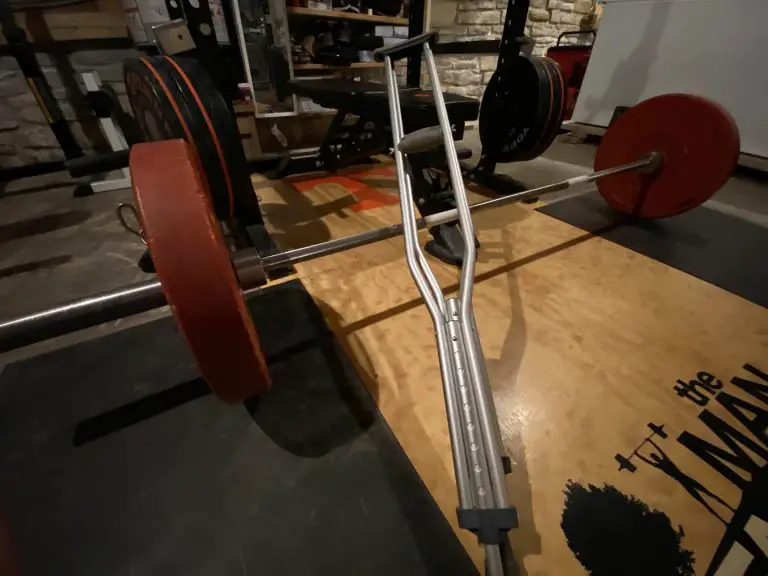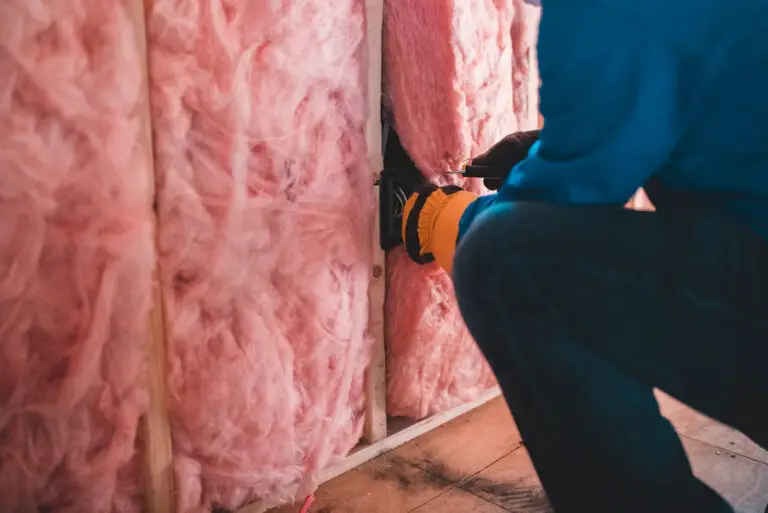 This is chapter 10 in my book The Bailey Line Road Chronicles, the 30-year story about moving from the city to live a modern homestead life deep in the country on Manitoulin Island, Canada. Missed Chapter 9? Click here to read it.
This is chapter 10 in my book The Bailey Line Road Chronicles, the 30-year story about moving from the city to live a modern homestead life deep in the country on Manitoulin Island, Canada. Missed Chapter 9? Click here to read it.
Before I go on with the timeline of our story at the end of Bailey Line Road, I’ll sidestep to share some stories that Ivan Bailey either told me about, or was a part of. He was the wise old guy who lived his whole life on the property we bought, offering advice and comments to us over the last 10 years of his time.
There was something about Ivan that I didn’t realize fully before he died in January 1995, something that would have made me act differently if I had realized it at the time. Ivan was one of the only remaining old, old-timers on western Manitoulin. Sure, there are old people here now, but none reach quite as far back into the pioneer era as Ivan did.
Born in March 1909, Ivan was 44 years old before electricity became available to him, electricity and all it meant for country life: running water, bright lights, power tools, refrigeration, a freezer and more. Ivan lived nearly half his life with the reality that you never travelled the 12 miles into town from October to May each year because the roads were never plowed in winter and the hardships of travel too great. You stocked up with flour and raisins, salt and sugar in the fall and you made do with your root cellar and your livestock until spring came, no matter what happened. A car was something you put up on blocks in the fall and fired up again when spring had settled in for good.
Ivan was of an age and situation that let him experience the largest change in lifestyle that anyone has ever seen in human history so far. As a boy he grew to be a man on a subsistence farm with no phone, no electricity and no fossil fuels except a little bit of kerosene for lamps. Fast-forward 60 years and Ivan is buying a new car one year and a new pickup truck the next, year after year. He had TV, running water, microwave ovens and telephone. Near the end of his life he flew over the Atlantic to go on a month-long tour of Europe and the UK with a live-in girl friend more than 30 years his junior. If I had the chance to do things over again, I’d ask Ivan more questions, take photographs of him, and make sure his large collection of personal photos didn’t disappear after his death like they did. I think they got burned. He had shoe boxes full of photos of the olden days, many of which now exist only in my memory as far as I know. So, while I can still write these stories down, here are a few that Ivan told me, some short, some long . . .
Ivan and the Potato Water
One day in March when Ivan was 10, he was playing outside the door of the family home as spring turned to winter. Ivan’s mother, Mary, asked someone in the house to pick up a pot of scalding hot potato water from the kitchen wood stove and dump it outside the door. I think it might have been Robert John, Ivan’s oldest sibling, though I’m not sure. He was 21 years older than Ivan, so he would have been a full-grown man at the time. At any rate, the year was 1919, and with running water still more than 30 years into the future, there was no sink nor drain in the house. Without watching where the nearly-boiling water got dumped, it landed on little Ivan outside the door. He never mentioned a doctor being available to help, and it took him more than six months of rest to get over that bit of carelessness. “The only thing good about that nasty business”, remembered Ivan, “was that I got the rest of the year off school.”
 Woodland Caribou and White-Tailed Deer
Woodland Caribou and White-Tailed Deer
Ivan’s father, Isaac, was one of three Bailey brothers who settled on farms along what eventually became known as Bailey Line Road. Although none of these men were original homesteaders in the area (Ivan’s farm – now mine – was pioneered by a man name John Taylor), the three Bailey brothers were around early enough to see the landscape of Manitoulin transition from a mostly forested area to the mixture of farmland and forest that’s here today. One of the many changes this brought was the disappearance of the woodland caribou. “I never saw caribou myself”, remembered Ivan, “but my dad did and he shot a few. They were scarce then, but they disappeared completely before people started seeing white-tailed deer on the Manitoulin.”
Beautiful as they are, these days deer are so common they’re a nuisance in some ways. Even with an annual hunt that kills 4,000 to 5,000 each November, they’re still common enough to be a serious road hazard and a bane to gardeners. A guy I know runs an autobody shop in town and he says 25% of his business comes from repairing deer collisions with cars and trucks. It’s not unheard of to see three or four deer walking down the main street in Gore Bay in the middle of the day, but it wasn’t always this way.
“When I was a boy, my dad plowed up some ground at the back of your third field for me”, Ivan told me once. “I planted turnips and potatoes and beans back there where the soil is lighter. They grew fine until the fall. You’d never do that today because the deer would eat everything off as soon as it sprouted.”
Why so many deer now and so few back then? Deer populations have been consistently high for the 30 years I’ve been here, but it was different until at least the 1950s. That’s because many families in the backwoods of Manitoulin relied on deer to survive. Hunting was more than a recreational activity then, it was a survival necessity. And although there were hunting seasons, they were never enforced. People shot deer and ate them when they needed to, year-round. Now the annual deer harvest is tightly controlled.
“More deer were shot with .22s than anything else”, remembered Ivan. “That’s much too small a gun for deer, but that’s what we had and that’s what we used.
“The best venison comes from a dry doe”, Ivan used to say. “A doe that never got bred and has no fawn is fatter than anything else you’ll hunt so it tastes better.”
Even though the balance of farmland and forest hasn’t change much on Manitoulin in 80 years, the eating habits of deer have probably changed. When I was a boy”, explained Ivan to me one day, “the fat from a venison roast would harden at a higher temperature and stick to the roof of your mouth. Venison is different now. The fat is more like beef. It never hardens in your mouth. I don’t know why, but maybe deer are grazing more on pasture fields these days and eating less browse and cedar branches. Maybe they’re eating more like cattle. That might not be the gospel truth, but I do know that venison is different than it was back in the day.”
The Wreck of the Atwater
Like I’ve mentioned before, although Manitoulin is a freshwater island, the water is big enough that it looks and behaves like an ocean, especially along the south shore. And the similarity with the ocean included the tendency to wreak ships. “When I was 11”, remembered Ivan, “the day after a big November blow, men started pounding on our kitchen door one morning. They were cold and wet and needed help. The night before, their ship, the Atwater, hit a shoal about half a mile off the Lake Huron shore and broke up. The men washed up on the flat limestone bedrock, the survivors found a logging trail and they walked the three miles up to our house. Mother made them something to eat and they got warm at our place until we took them into town.”
You can still see the remains of the Atwater if you know where to look. The rocks the ship broke up on is still called “the Atwater shoal”. The surprising thing to me is how far up the shore you’ll find the timbers and planks and rusted hardware of this ship. I guess it marks the highest point the water ever gets during a storm surge, but it’s more than 100 yards further inland than the usual water level.
Ivan and the German Prisoners
Ivan was 10 years old when World War I ended, and 30 years old when World War II started, so he never saw action overseas, but he did see German soldiers up close. It happened in the summer of 1940. That was the year Ivan traveled off Manitoulin to work as a stone mason on a crew building a church on Birch Island. It’s one of a handful of small islands between Manitoulin and the mainland, not too far from a good sized town called Espanola. One Saturday night, after the work week was done, Ivan and some of the guys on the crew headed north to spend time in Espanola. The main industry there is a paper plant that started in the late 1800s, but it closed in the early 1930s when the weight of the great depression settled in fully. The Canadian government decided that the old mothballed paper plant in Espanola would make a great prisoner of war camp, so they sent hundreds of German soldiers there to wait out the war.
“We were walking down the main street in Espanola”, explained Ivan, “when we heard a noise coming. It was all the German prisoners out marching. Hundreds of big, blond, strong young men high-stepping together sent a shiver down my back. If these were the kind our boys were fighting, it was going to be a long war.”
The paper plant in Espanola proved to be a particularly good location for a prison camp because it was so remote at the time and so far from any way to get back to Germany. I’m told that no prisoner ever got away from that place permanently. Some did successfully escape, but they all eventually came back on their own. The black flies and the isolation were worse than life in the camp so they returned with their hands up. In fact, some of the German soldiers liked Espanola so much that they stayed after the war, getting work, starting families and living there for the rest of their lives. German surnames are still part of the community around Espanola because of this.
Even life as a POW at the paper plant during the war might not have been that bad. In the early 1970s, a section of the main street in Espanola caved in unexpectedly. I’m told by a historian with the paper plant that investigators discovered an old tunnel from the war years had finally collapsed, a tunnel that used to run from the prison barracks at the plant, under the main road, and into the basement of a tavern across the street. No one in charge of the town or the plant knew about the tunnel until the road caved in, but it was clearly part of the recreational opportunities the Germans had created for themselves while they were away from home.
 If you’re ever driving on highway 6 between Espanola and Little Current, Ontario, keep your eyes open for the Birch Island road sign. There, right alongside the highway, is that stone church Ivan was working on in the summer of 1940 when he watch the soldiers march by. One wall faces the highway more than the others, and in the middle of that wall is a particularly big stone. That’s the biggest stone in the photo here. It stands out. You can’t miss it. “I lifted that stone up the scaffolding and set it in place myself”, remembered Ivan to me proudly one day. “No one helped.” That was Ivan for you. A strong, proud, muscular rural man who was only about 5’ 7” tall.
If you’re ever driving on highway 6 between Espanola and Little Current, Ontario, keep your eyes open for the Birch Island road sign. There, right alongside the highway, is that stone church Ivan was working on in the summer of 1940 when he watch the soldiers march by. One wall faces the highway more than the others, and in the middle of that wall is a particularly big stone. That’s the biggest stone in the photo here. It stands out. You can’t miss it. “I lifted that stone up the scaffolding and set it in place myself”, remembered Ivan to me proudly one day. “No one helped.” That was Ivan for you. A strong, proud, muscular rural man who was only about 5’ 7” tall.
Isn’t it funny how things can matter to us so much at the time, but how they also fade in importance over time? Is there anything valued by humans that doesn’t fade to insignificance eventually? I made be the only person alive who remembers Ivan and his story about that big stone. At least you know it now, too.
Ivan and the Pension Cheques
 Before Ivan got cancer, he spent a month touring Europe with his live-in girlfriend Marjorie Pidgen. She moved in with Ivan in 1987, a year after Ivan’s wife, Dorothy, died. You’ll hear more about Marjorie as The Bailey Line Road Chronicles unfolds.
Before Ivan got cancer, he spent a month touring Europe with his live-in girlfriend Marjorie Pidgen. She moved in with Ivan in 1987, a year after Ivan’s wife, Dorothy, died. You’ll hear more about Marjorie as The Bailey Line Road Chronicles unfolds.
Being neighbours, Marjie asked me to take care of her dog, Sandy (a little light brown lap dog) and to collect their mail while they were away. So every couple of days for a month I’d walk over to their house, tilt open the steel door on the big metal mail box on the cedar post by the road, listen to the rusty hinges squawk, then sort the real mail from the junk before putting the important stuff in a box in the kitchen.
Have you ever noticed how different homes develop specific smells depending on the people living there? I can still remember the smell of Ivan’s house and how it changed after Marjie moved in. It wasn’t a bad smell and it wasn’t due to any particular kind of cooking she did. Marjie cooked the same meat-and-potatoes fare that Ivan’s wife Dorothy had always cooked, but her smell changed the place. Mary knows the smell too, and we still occasionally talk about “the Marjie smell”.
My time as mail collector and dog feeder just barely overlapped two deliveries of government pension cheques while the unlikely jet-setting couple were away touring the continent. Ivan was old enough at the time to be receiving a government pension, but Marjie wasn’t. The funny thing is, Ivan would get two separate cheques each month. One was addressed to Ivan Isaac Bailey and the other to Isaac Bailey. Ivan’s middle name was, in fact, Isaac, but his father’s first name was also Isaac. Ivan always had a reputation for being particularly wealthy, even though he often wore old clothes and mostly stayed at home. “I earned about a dollar a day for most of my life”, protested Ivan. “How could I have a lot of money?”
Perhaps it was Ivan’s habit of buying a new vehicle each year that got people thinking he was rolling in dough. Recall the reputation that Bilbo Baggins had after returning to the Shire in Lord of the Rings and you’ll get a sense of how old Ivan Bailey and his money was thought of locally. But is it possible that somehow Ivan’s father’s pension cheques just kept coming after his death in 1947, with government wires being crossed somewhere and not catching the oversight because of the similar names? Could it be that Ivan Isaac Bailey and Isaac Bailey were both “alive and well” as far as the government was concerned, both living at the same address they always did but with only one of the two Isaacs around to cash the cheques? Surely not, though a person might wonder about that steady stream of new vehicles purchased by a man who earned a dollar a day for most of his working life.
Ivan and the Corpse
One of the realities of living in an economically marginal region is that people often move away for a time to make money. And though Ivan spent most of his life on Manitoulin, he did live and work at a funeral home in Sault Ste. Marie, Ontario for a few years during World War II. A lot of Manitoulin people went to that city for work back then, just like people from Maritime Canada come to Ontario or Alberta to make money now.
Ivan’s boss at the funeral home was a discontent man, prone to goading Ivan on with comments and criticisms. One such criticism happened just as they were completing the preparation of a body in the embalming room in the basement of the funeral home. “Hey Bailey, I bet you can’t carry this corpse upstairs and lay it in the coffin by yourself”, Ivan imitated the man’s voice as he told me the story one day while I was sitting in his living room. “How much will you pay me if I do it”, Ivan snapped back. “Two bucks that says you can’t”, wagered the boss. (That’s about $30 in today’s money).
“I’d been doing stonework before I left the Manitoulin that year”, Ivan told me like a narrator in a movie, “so I was muscled up. I hugged that body with both arms, picked it up and carried it upstairs, through doorways, into the funeral parlor and laid it in the coffin. The clothes were a little messy, but I did it. A dead body’s not an easy thing to carry by yourself, you know. The boss slapped two bucks into my hand and left without saying anything.”
Farmer Ivan
 Settlers came to western Manitoulin in the late 1870s and 80s for the promise of free farmland for anyone who would clear five acres and build a house in five years. All the old timers farmed, though most also cut timber and worked off-island to make ends meet. But still, farming continued, as it does today. Clearing the land didn’t happen all at once because it was such a hard job without chainsaws and bulldozers. Ivan was in on the process as a boy, helping to clear what’s now our second field. “It was covered mostly in big yellow birch back then”, Ivan remembered, “and my dad cut the timber and pulled the stumps. When he was done you could step from one stone to another anywhere in the field. We spent one whole summer picking all those stones and dumping them along the edges of that 15 acre field. The next spring the frost brought up just as many stones again. It broke your heart to have another summer of picking stones.”
Settlers came to western Manitoulin in the late 1870s and 80s for the promise of free farmland for anyone who would clear five acres and build a house in five years. All the old timers farmed, though most also cut timber and worked off-island to make ends meet. But still, farming continued, as it does today. Clearing the land didn’t happen all at once because it was such a hard job without chainsaws and bulldozers. Ivan was in on the process as a boy, helping to clear what’s now our second field. “It was covered mostly in big yellow birch back then”, Ivan remembered, “and my dad cut the timber and pulled the stumps. When he was done you could step from one stone to another anywhere in the field. We spent one whole summer picking all those stones and dumping them along the edges of that 15 acre field. The next spring the frost brought up just as many stones again. It broke your heart to have another summer of picking stones.”
Today this field is my best one, hardly a stone in it, with long berms of picked stones growing moss along the edges. It may be a little field, insignificant in the world of agriculture, but it was a hard-won victory to bring it under cultivation. It’s not going back to trees on my watch.
When Ivan was about 30 years old he built a barn on the property, starting with a stone foundation built on an area of flat limestone bedrock. As far as I know it was the first stonework Ivan did, and the walls are about 8 feet tall. He had a relative named DJ Bailey build and raise the frame of the barn on that foundation, but Ivan nailed the boards on the walls and roof himself, then installed cedar shingles on the roof. “My dad was away cutting timber on the mainland”, Ivan told me one day, “so my mother helped me with the barn. She would pass me shingles and boards while I worked alone.”
I never did see that barn because of something that happened in the early 1970s. “Lightning hit the barn and it burned”, explained Ivan in that matter-of-fact way country people often talk about the big disasters in their lives. “I’d just had lightning rods installed, but they must have did it wrong. The rods attracted lighting and that started the fire. I did have livestock then, so the barn was full of lumber I had cut – cedar, yellow birch, oak and maple.” Ivan was a pretty good woodworker and an even better collector of wood. “You wouldn’t believe the heat of that fire”, remembered Ivan. The stone foundation is still there and in good condition now.
One of the things Ivan showed Mary and I as he led us around the property as prospective buyers back in August 1985 was something he called “the spring”. It looks like one of those old-time water wells with stone walls. Look down into it and you’ll see water never more than four or five feet from the surface in the driest time of the year. When the weather is wet, water flows out of the spring constantly. “I’d always noticed a wet spot in the field”, Ivan told me one day, “so I dug down and hit bedrock. I could see water in a crack in the rock, so I got some dynamite and blew the rock open wide enough to get a pipe down there.”
Why is it that the world seemed safer and people more decent at a time when anyone could go to the hardware store and buy as much dynamite as they wanted, yet now people can’t be trusted to carry a nail file on an airliner?
When Ivan cleared the rubble, he found the water was good. He built stone walls up around the greatly-enlarged crack, put the soil back around the stone walls he built, then watered cattle out of it for years. “Twice a day for 40 years I’d go back and pump water into a trough by hand. The spring never went dry.”
I’ve watered cattle out of the spring for 30 years of my own now, and I’ve shown the spring to anyone who was interested. Even the old timers I’ve taken back there have never seen anything like Ivan’s spring. When I started grazing cattle in 1987, I installed something called a pasture pump on the spring. It’s got a nose piece and built-in trough. The cattle learn to work the pump with their nose and head. It’s always amazing to me how small technical advancements have made farming easier and more productive. This past year our 38 1/2 acres of pasture yielded almost 11,000 lbs of weight gain in the cattle, something that never could have happened without rotational grazing made possible with electric fencing. Little things can make a big difference.
Ivan’s End
Cancer killed Ivan in the end, cancer that started on the skin of his face and spread internally. He never did get any aggressive treatment for it, just some creme the doctor gave him when the cancer first appeared when he was in in early 80s. As the disease progressed, it affected the nerves in his face, so his left cheek and that side of his mouth became droopy as if he’d had a stroke. Eventually you couldn’t understand Ivan speak very well, but he never did give up physically. Barely able to walk, he still put on his storm windows in the last autumn of his life. He still cut the grass with his lawn tractor. He still kept his property neat and tidy.
One day in early January of 1995, Ivan’s live-in girlfriend Marjie called us in a panic. “Ivan’s left the house and I can’t get him back. He’s mumbling something I can’t understand and he’s heading your way down the road.” We were having a January thaw then, and rain had turned all the hard-packed snow to ice. The road between our two houses was slick, wet ice. I ran out to the road, and there was Ivan, sliding on his bum, inching his way along the 150 yards of road between his place and ours. He was almost at our mailbox when I helped him stand up. I couldn’t understand what he was saying, so I led him down our driveway and into the house. He sat down at the kitchen table, distressed. Ivan was completely coherent mentally, but his voice wasn’t working so neither Mary nor I could fully understand what he was saying. We could take a good guess, though.
I don’t know for sure, but I think Ivan was wrestling with deep regret. I’d never seen him like this before. His relationship with his daughter, Darlene, had become strained over the last 8 years after Marjie moved in. There was some talk about a will being changed and such. Ivan and Darlene hadn’t been on speaking terms for a couple of years as far as I knew then. In less than two weeks, Ivan would be dead and I think he knew it was coming. One of the saddest things to see is a person who misses the last train to forgiveness. Ivan was trying to catch that train, but it was pulling out of the station. As far as I know, he missed it. The next time Darlene saw Ivan was in the funeral parlour, laid out in a modern, blue fiberglass casket. It was strange to see such an earthy, old-time man laid to rest in one of the most synthetic and modern coffins I’ve ever seen. Ivan was not a religious man, and a minister who never met him did his funeral. Ivan had never been much for faith as far as I could tell. I wonder how he likes being dead?
Ivan lived his whole life in my little corner of the world, he struggled and worked hard and left a few fading things that are still here today. Isn’t it surprising how quickly most people are forgotten? A wise man once noted that “man is like a mere breath; his days are like a passing shadow.” The older I get, the more I realize how true this is.
Want to read chapter 11 of the Bailey Line Road Chronicles? Click here.
This is currently the end of The Bailey Line Road Chronicles. Want to help make it a complete and published book, then get a copy for yourself? I’m looking for faithful readers who will partner with me to complete this project. Just a couple of dollars a month gets you your own copy of the complete story when it’s done, and your name on “The Patrons” page if you want. Click here for details about how you can help it all happen.













